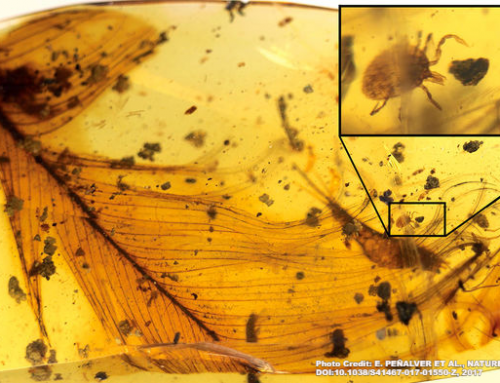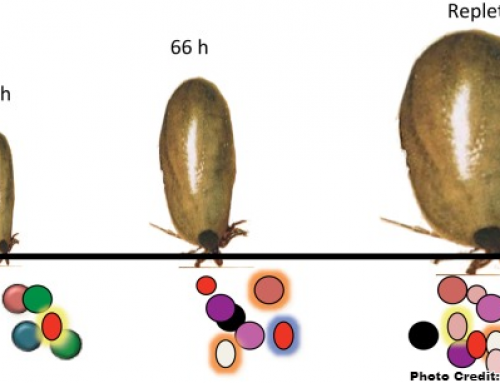Hi everyone, Tattle here! A new week means a new blog.

Photo credit: George Poinar, Jr. / Oregon State University.
As discussed in my last blog, Lyme disease was only recognized nearly 50 years ago, but this disease existed wayyy before humans did. Lyme disease is estimated to be about 15 million years old and modern humans didn’t come into the picture up until 2-3 thousand years ago. The 15 million year-old evidence was discovered in the Dominican Republic by Oregon State University researchers. This tick fossilized in amber contained Borrelia, “a type of spirochete-like bacteria” that is still the cause of current-day Lyme disease (Amber discovery indicates Lyme disease is older than human race).
It is not surprising that humans have been getting Lyme disease from tick-borne bacteria for as long as there have been humans. However, research was not done until the late 1900s. According to Oregon State University, the oldest documented case of Lyme disease was 5,300 years ago on a Tyrolean iceman (a mummy found in a glacier in the Italian Alps!).
Not so long ago, in 1981, a scientist, Willy Burgdorfer, who was studying Rocky Mountain Spotted Fever (also caused by tick bites) began to study Lyme disease. Burgdorfer soon found the connection between the deer tick and Lyme disease. Ultimately, he discovered that a bacteria (spirochete) was causing Lyme disease through tick bites.
Talk to you soon,
Tattle





